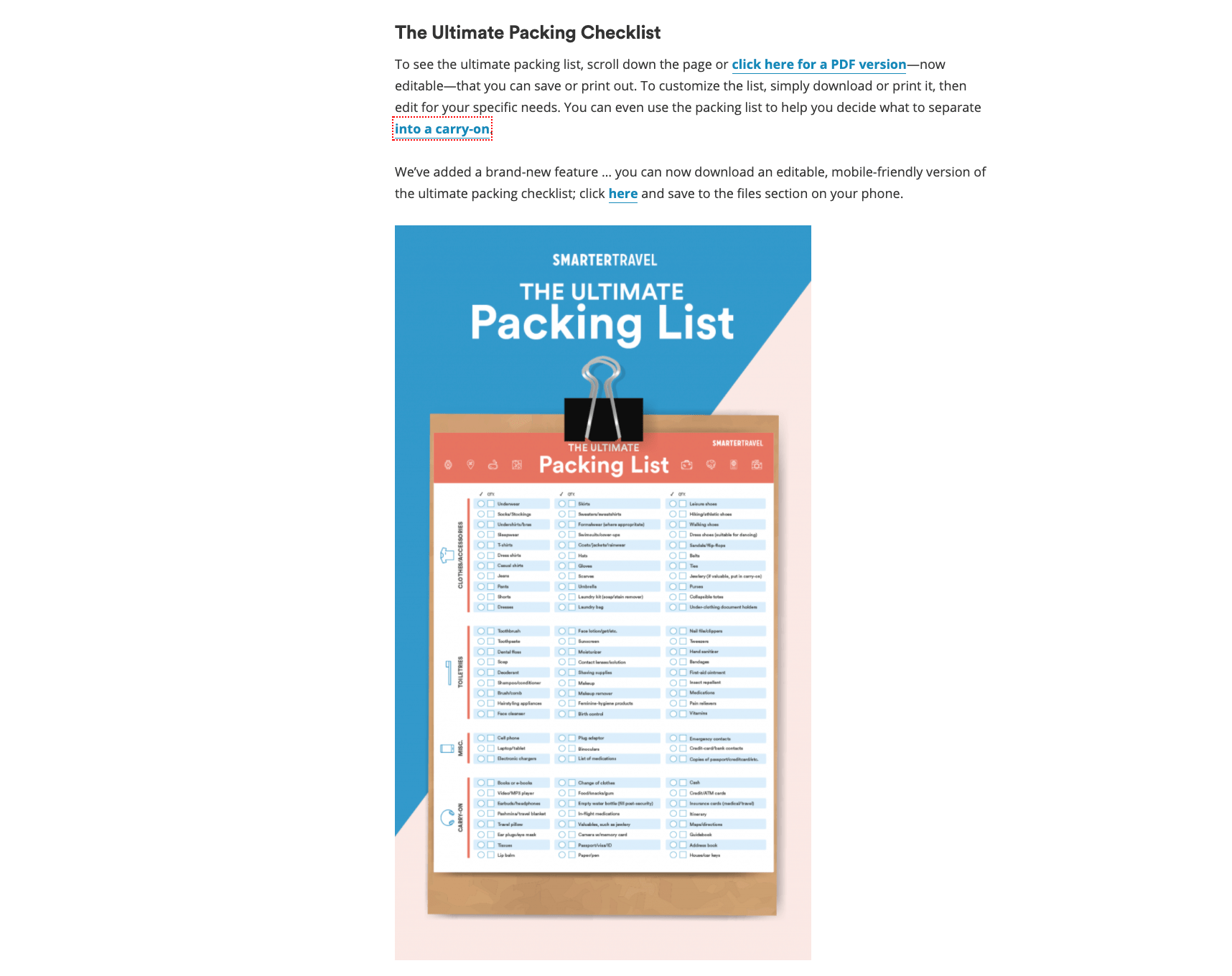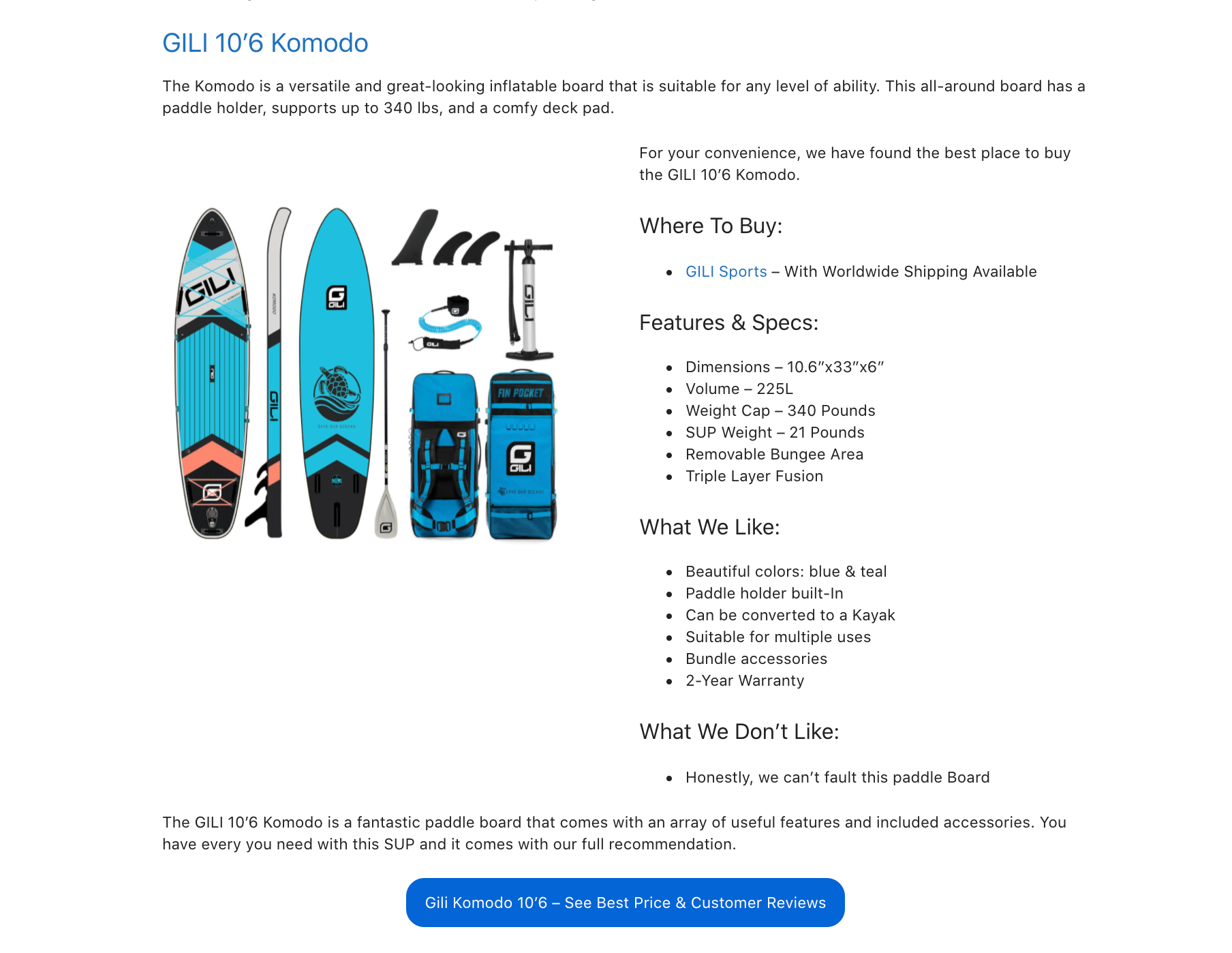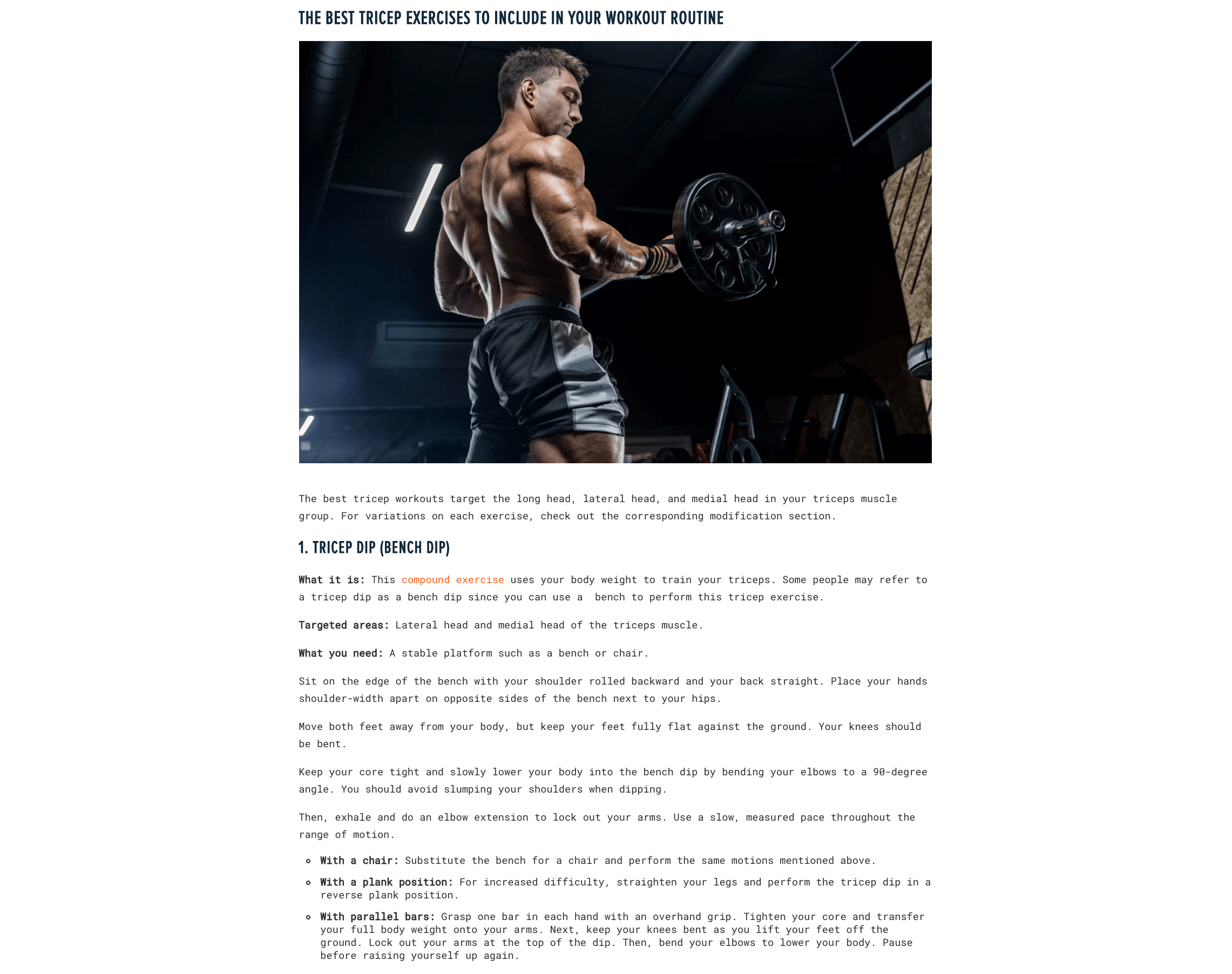
Whether or not you should be producing content for your business’ blog is no longer even a question.
The question that has replaced it is “what kind of content, how often and covering what subjects should you be producing”.
Today we’ll be looking at informational content and why it should be on your content production list. Let’s dive right in.
How Can Informational Content Boost Sales?
In order to turn your small business blog into a steady revenue stream, you need to publish different kinds of content. And while the most obvious choice is publishing plenty of sales-oriented posts that flaunt your products or services and just how good they are, informational content can sometimes be of more practical use.
For starters, sales pitches are inherently untrustworthy, as you clearly have an agenda. You are trying to sell a product. How likely are you to say anything negative about it? How honest are you likely to be? What are the chances you are not over exagarating?
On the other hand, informational content has no agenda, it merely serves to help a reader out.
It is also an incredible way to establish yourself as an expert, and form a relationship with your audience that is built on trust and authority.
Informative posts can also often rank for keywords that are less competitive. True, you will need to find ones that are not already overcrowded, but this won’t be mission impossible.
When choosing the topics you are writing about, you still need to ensure that they tie in with your service or product. You don’t want to be writing about something that in no way relates to your offer. Or, you at least want to be writing very few of these posts.
Most of your informational content should allow you to mention your brand, at least in the CTA. You are not at any point flaunting your own wares. However, you do need to subtly reference yourself.
When executed and promoted well, informational content will direct new traffic your way, which you can cleverly convert with the clever use of CTAs and internal links. It will improve your overall rankings and it will boost the value of the pages you link to from it.
Don’t forget that there is a time and a place for long-form content, and that informational content need never be the only type of content you produce. Depending on your industry, competition and target market preferences, find a balance that allows you to both do sales, informational, how-to and every other kind of content.
In no particular order then, here are 8 different ways to use informational content in a sales-boosting capacity:
An Informative Blog Post
First, there is the usual informative blog post.
Blog posts are the most commonly used type of informational content, however, sadly, most of them rudely miss the mark and offer very little to no information.
These kinds of blog posts should equip your readership with something they can then action in their own lives. Tips, tricks, hacks, whatever you want to call them, concrete data or advice needs to be the backbone of these blog posts.
Merely typing out 1000+ words that don’t amount to anything won’t cut it.
Consider what it is your audience would like to know, and how you as a business are able to help them out. You don’t necessarily need to be flaunting your own product or service throughout the post. You can focus on the advice first, and list your brand at the end of the post, or inject it where it’s the most useful.
Make sure you write posts that have the highest possible chance of being read too. This can either mean, especially if you are relatively new on the market and don’t yet have a steady influx of traffic, focusing on keywords that have a reasonable (we’d say anything above 200) monthly search traffic that you can rank for (i.e. can build enough links and write the best possible article for).
Or, you can choose topics that you know the audience that you already have will enjoy. These keywords may be harder to rank for, but readers who have already found you will be the ones reading them, so ranking is a secondary factor here.
For example, here is a post on tea label designs from Inkable Label. The post itself is informative, useful, and it also features plenty of images from a wide range of tea brands. The reader is likely to draw inspiration from both the tips and the different examples shown.
A Comprehensive Guide
In-depth guides on a particular subject are another category to consider. Especially if you are able to write a guide on your own industry, niche, product or service.
Since we are talking about informational content here, and not sales-oriented content, don’t forget that the aim is not to explain what you are able to offer. Quite the contrary, you are using your expertise and knowledge to give someone who perhaps knows nothing about the subject all the information they need to make a certain decision, or simply introduce them to the topic.
Your main goal here is to establish yourself as a trustworthy source. The information you provide needs to be precise, and it needs to be correct. You want to carefully consider the audience you are writing the post for: are they complete beginners, or are you talking to a more knowledgeable crowd?
You are free to mention yourself in the CTA, but do refrain from placing too much focus on yourself as a brand. A good example of this kind of post is this guide to buying your first paddle board. It’s long, it’s detailed, and if you have never owned a paddle board before, you won’t need to look for another resource after having read this post.
That is the ultimate goal with this type of content: satisfy all of the reader’s questions and establish your post as the only one they need to read.
A Best of List
Another way to write blog posts is to turn them into “best of” lists. These posts essentially provide recommendations on a certain topic, and can be adapted to literally anything.
The key for this type of content to work is, you’ve guessed it, for it to be actually valuable. Lists that are nothing but lists and that don’t go any deeper than numerating won’t be of much use to your readers, as they will have to find other sources that will provide more information.
Ideally, you want to structure these posts so that they have an introduction that highlights the importance of the topic at hand, and that teaches your readers anything they may need to know about it. If they are already pretty knowledgeable, they can simply skip the into, and move right over to the list.
Every item on said list should be described in as much detail as possible. Provide concrete advice, explain your reasoning for choosing that specific item, and contrast them with each other.
Inserting your personal opinions or experiences will also go an incredibly long way. Given the fact that you are, for example, a shoemaker, most likely means your opinion on shoes matters and can be trusted. However, in order to stand out and form a deeper relationship and understanding with your audience, show them your human side and your own thoughts.
As an example, here’s this Transparent Labs post on tricep exercises. It has that useful introduction that details what the triceps are, why it’s important to train them, and then goes on to explain exactly how a certain exercise should be executed. It also links to videos of each movement, making it even easier for readers to visualise what it is they should be doing.
The brand itself is only mentioned at the very end of the post, in an unobtrusive way – which is, remember, the way you want to insert yourself in all of your informational posts.
A Comparison Review
Finally, let’s touch upon one more blog post format, the comparison review.
These posts are quite similar to best of lists, but they are specifically reviews of products or services, and not lists of “best ways to do something”.
Their point is of course to provide the reader with information that will help them make a purchasing decision. However, what makes them very difficult to write is the fact that you can’t expect to write this post and be believed if you list yourself as the absolute best choice.
Unless you are able to provide a completely unbiased article that may not even feature you (but that also won’t be giving your competitors a shoutout), your best option is to write this post for others, as a guest post, or to be featured on other author’s lists.
On the other hand, you are still able to write a comparison post for your own blog, but not about your product or service specifically.
For instance, you may be selling shoes, and shoes only. If this is the case, you can do a post on the best shoe horns, best socks, best sprays that will keep your shoes fresh for longer. All of these topics will help your audience immensely, but they won’t interfere with your own sales.
Here’s this post on the best mattresses you can buy online. Its structure is what we are looking at, and one you should aim to replicate. It provides plenty of detail about each product, and provides a list at the top of each product to be featured, saving the reader a lot of scrolling.
It also categorizes the products it mentions, making it very simple for readers to jump straight to the part they are actually interested in.
A Quiz
Informational content with a twist, a quiz is a great way to turn your content interactive, and boost your audience engagement in one fell swoop.
The aim of your quiz should be to solve an issue or to provide answers to a common question. For instance, you can create a quiz that helps your readers determine which of your products or services they need.
The quiz can be entirely useful and contain no element of fun, or you can inject some laughter into it and make it a bit of a joke. However, your ultimate aim is to provide information, so you want the results to be useful to the reader in some way.
Quizzes can also be a great lead generation tactic, as they can serve to capture contacts. Of course, you may expect to see some churn if you only provide the answer in exchange for an email address.
Your best bet is to provide further information, additional tips and fresh insight to those who choose to share their contact details with you. You don’t want them to unsubscribe from your list as soon as they get their quiz results.
Here’s a simple yet effective quiz on choosing a dog breed. The questions are insightful and they will certainly help a reader head down the right path. It was most likely not at all complicated to make it, and it also loads fast enough to provide a pleasant UX.
A Case Study
Case studies are of course informational content taken to the next level. Their aim is both to show your audience what you have been able to achieve, and to boost your own trustworthiness and expertise in the eyes of search engines.
A case study is a sales pitch in itself, so as long as you keep it honest and relatable, you will be hitting the mark. Don’t go overboard in patting yourself on the back. All you need to do is tell it like it was: what a client has come to you with, what you did, and what the results of your actions were.
Crazy Egg does really good case studies, although they are a bit on the braggy side, as is most of their content. However, the purpose is clear: here’s what our other clients have done, you can do it too if you use our service or product.
There is another kind of case study you can write too, if you are able to conduct industry research and share data and numbers that will be of use to your fellow competitors and clients. Ahrefs does this type of post very well, although they still do use their own software for the purpose at times, killing two birds with one stone.
An Explainer Video
Explainer videos are informational blog posts in another format, one that is likely going to be more shareable and has the potential to become more viral.
When producing this kind of content, your main aim is to keep it as short and condensed as possible, and to illustrate or demonstrate your points.
Explainer videos that merely talk and don’t show anything can also work, for instance if you use animations in the background that aren’t actually the focus of the video, whereas what you are talking about matters more.
However, your best bet is to create videos that demonstrate something: how to solve a specific issue, how to do something, how to make something, etc.
The question that now arises is how to insert your product. Since this is not a sales pitch, you can of course use your product (after all, you are trying to increase your sales), but don’t talk about it. Say the name of the product, but don’t go into detail. Provide links to it on the page.
These kinds of videos can also accompany your posts: here’s this post on explainer videos that also features an explainer video. More on the talky side of things, but the gist is there: the video provides a summary of the main points detailed in the post, and it can be easier to digest than reading through the entire post.
A Checklist

Image source: Smarter Travel
Finally, probably the most useful kind of informational content that you can create is the checklist. Especially if it’s also downloadable and printable.
People love checklists as it saves them the effort of creating one, and it can certainly help them run through the steps of something or ensure they don’t forget something.
Packing checklists like this one are incredibly popular, so if you are able to create something similar (it can also be a step-by-step checklist), you can attract a lot of traffic, especially from social media.
Your product or service is entirely secondary here, and the main purpose is to attract audiences and promote your website. No sales pitch needed – just make sure that the checklist landing page points to other useful content or pages: via a widget perhaps?
Final Thoughts
Sales-oriented content is not the only means to boost your sales. In fact, informational content can often be the better choice, as it is more honest and trustworthy, and can also be easier to create.
Ensure the topics you choose to inform your audience about align both with their interests and your expertise: after all, writing an amazing post about something totally unrelated to your brand will lead to no conversions at all.







